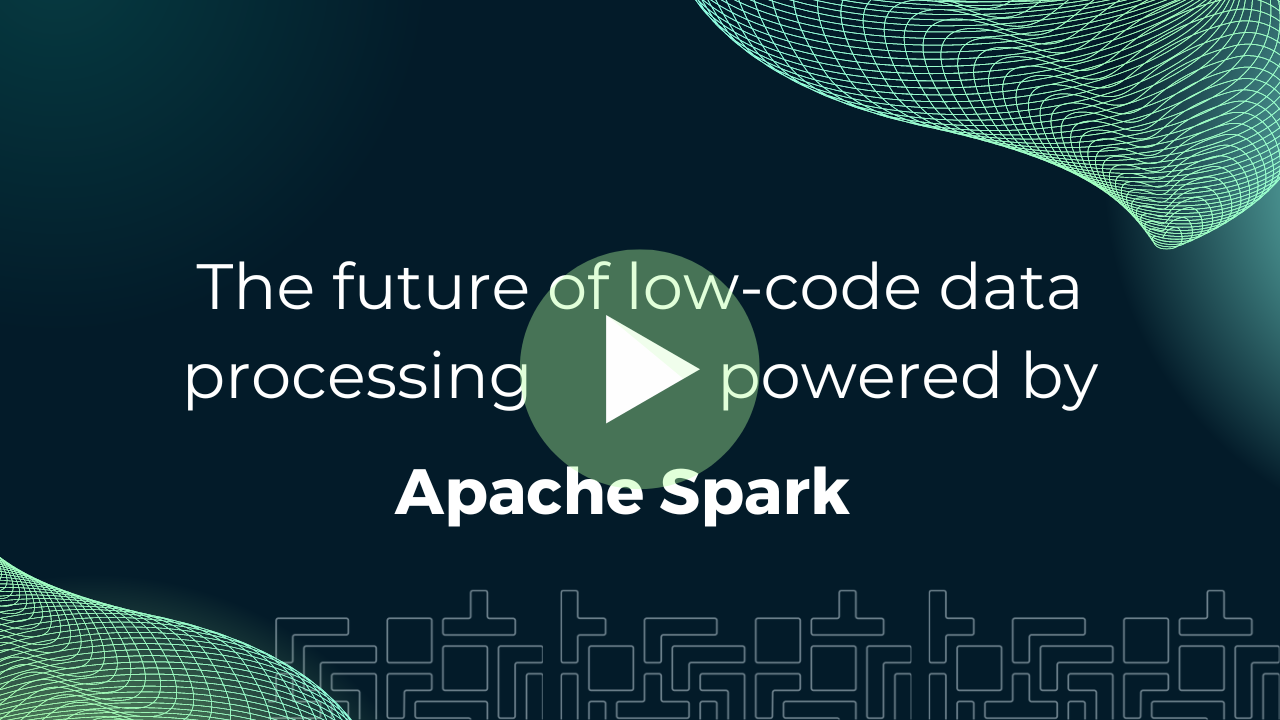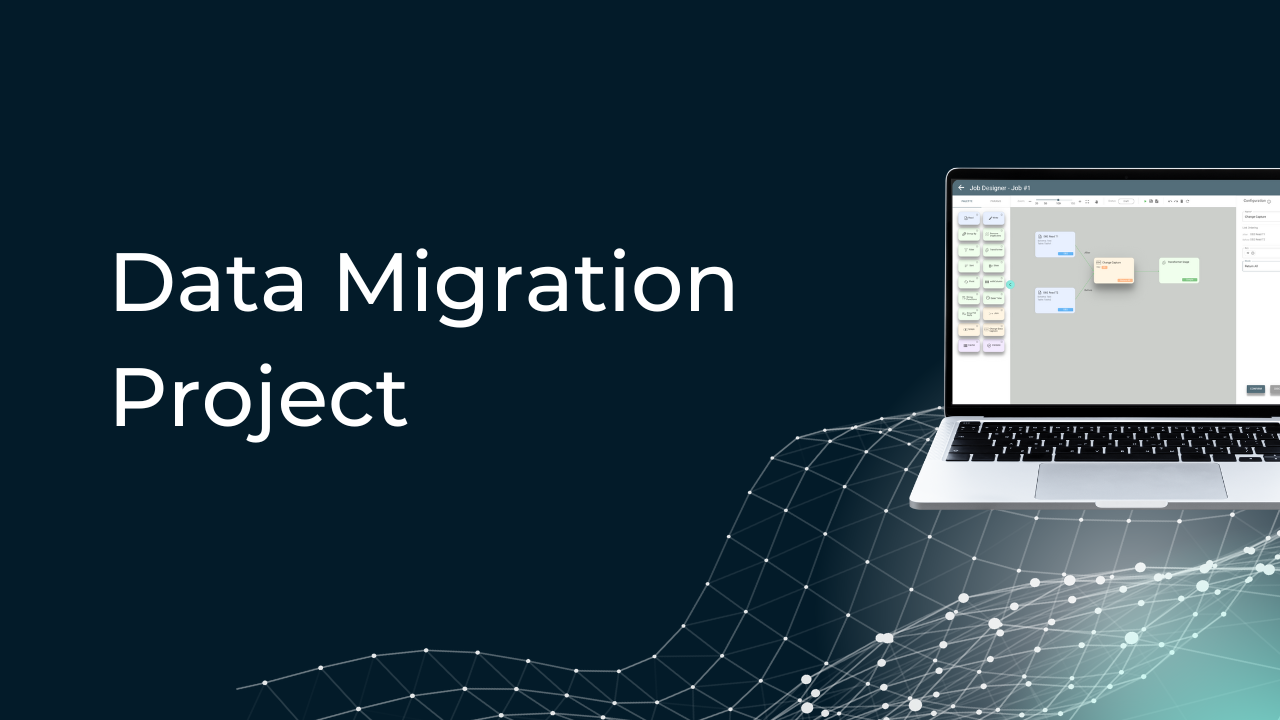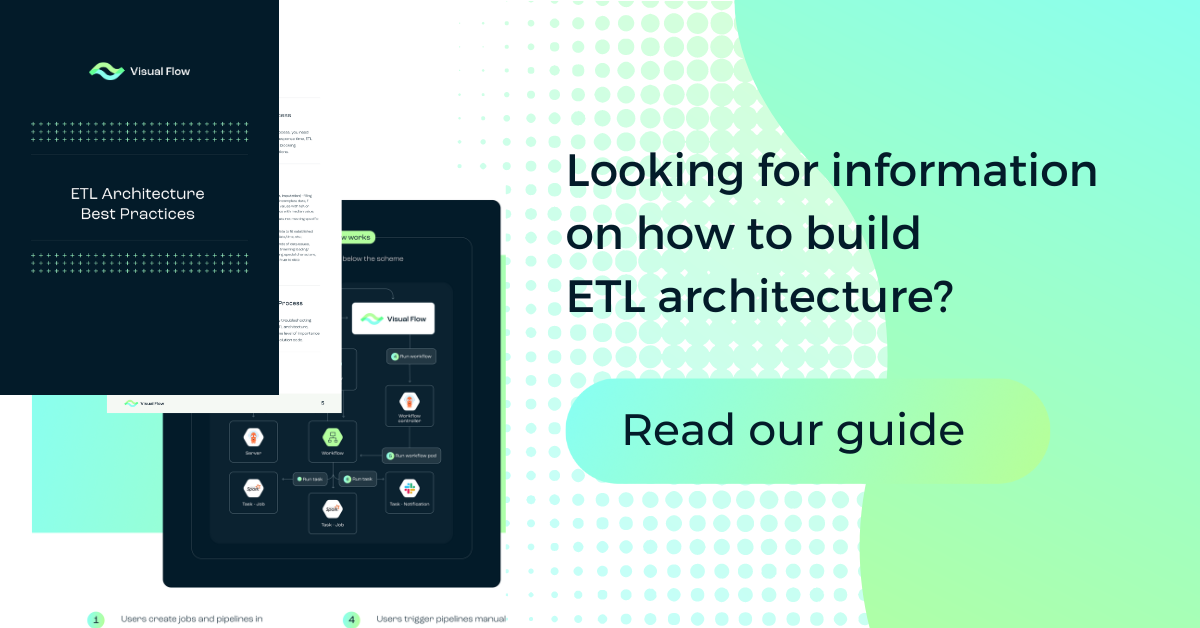Table of Content:
Table of Content:


There is more and more data, and no company can do without processing and analyzing it all. That spurred the development of various cloud ETL tools that can do everything: from collecting information to predicting the future. Their implementation is the cornerstone of big data, providing businesses with benefits and indicators that competitors have never dreamed of.
Among analytics tools, cloud-based ETL tools stand out. The Extract, Transform, and Load (ETL) tool retrieves relevant information from external source systems, processes, cleans up, and uploads it into a single repository. This procedure is key to preparing the data for analysis. That’s why, in this article, we will look at the most popular and relevant ETL tools on the market today.
9 Best Cloud ETL Tools
Visual Flow
We start our cloud ETL tools comparison with Visual Flow. This cloud-based ETL tool from IBA Group incorporates Apache Spark, Kubernetes, and Argo Workflows. By mastering Visual Flow, you reap the benefits of all three software products. It’s an excellent choice for those who don’t want to spend time and money on complicated and expensive tools with redundant features or build the solution on their own. Moreover, you won’t have to spend money hiring new developers or training them because this tool doesn’t require any coding skills.
It’s a simple ETL solution covering all your data preparation and communication needs. The cloud-native tool requires no additional development, and there is no need to replace it when the project scales.
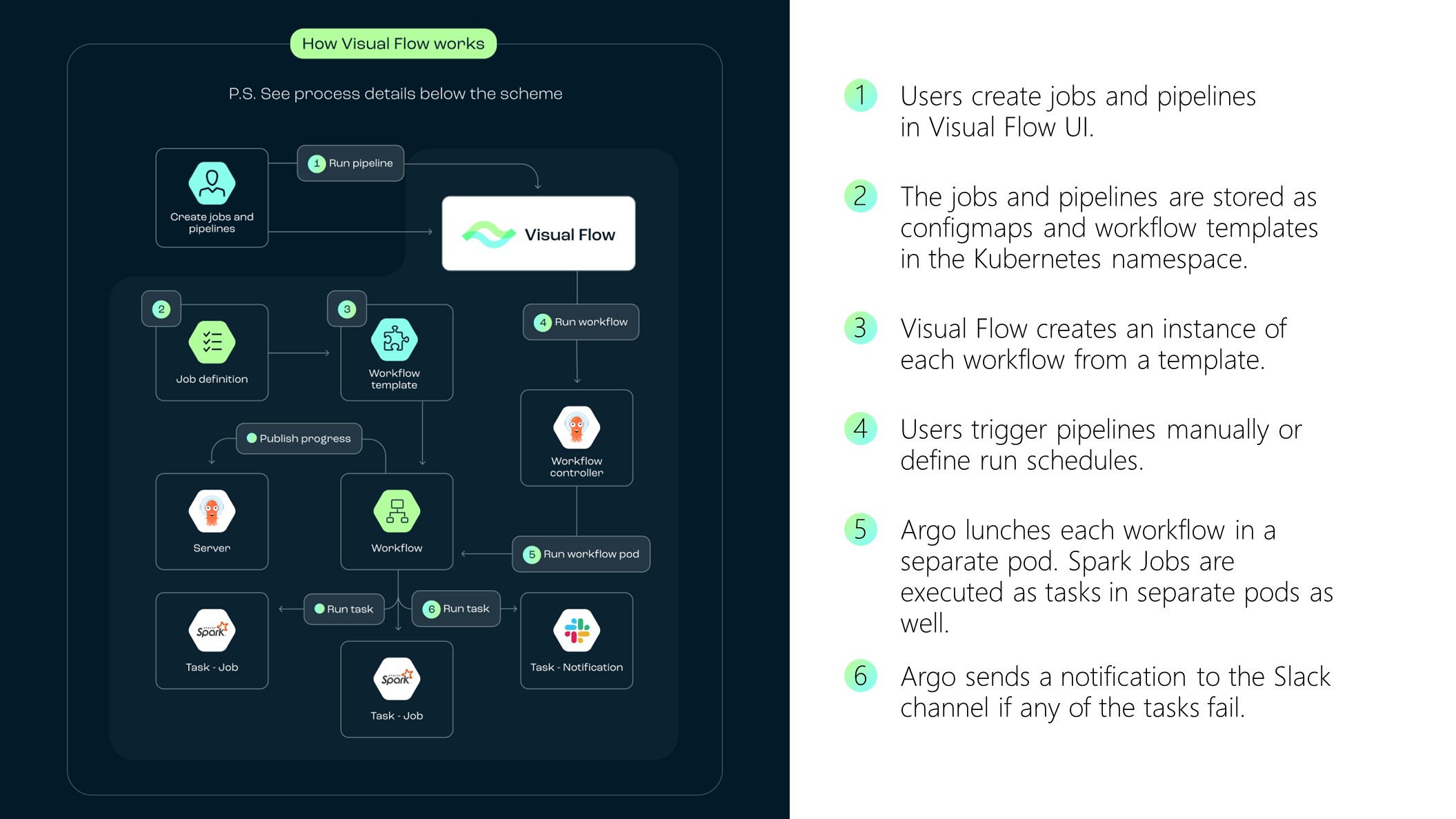
Visual Flow features:
- Runs on any Kubernetes cluster on-premises or in the cloud.
- Takes only 15 minutes to set up.
- No programming language knowledge needed.
- Incorporates best cloud ETL tools practices for ease of use.
- The power of the Spark processing engine.
- Increased developer productivity.
- High availability, performance, and fault tolerance.
- Cost efficiency.
- Google Cloud integration.
- Open-source code.
Informatica PowerCenter
Informatica PowerCenter is an ETL tool from Informatica company. This software allows you to connect to storage and retrieve all the data your business needs. PowerCenter is the way to go for organizations that need better virtualization with data quality control. It’s a data integration tool for analytics companies that has earned recognition among large corporations for its powerful feature set.
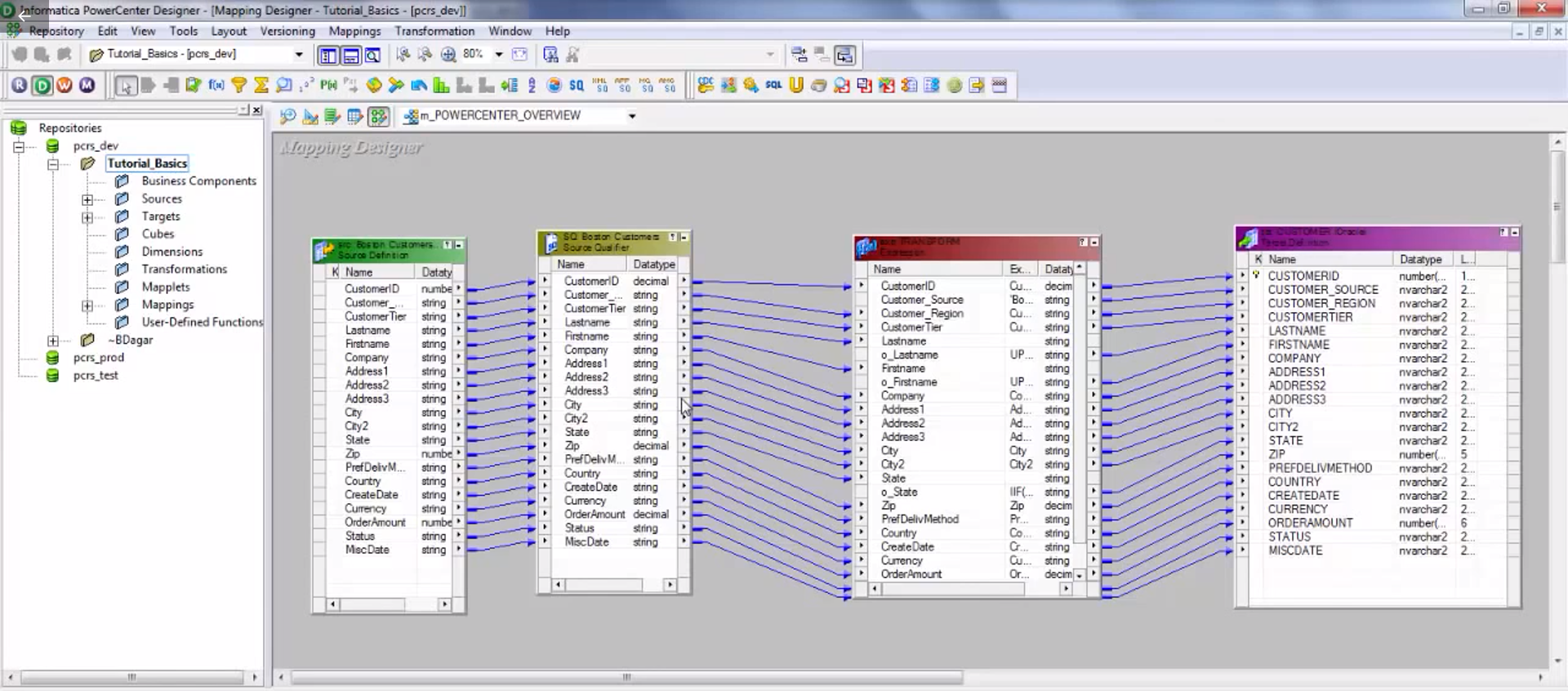
PowerCenter features:
- Impact analysis on integration efforts.
- Ergonomic graphical interface for data modeling.
- Built-in data quality utilities.
- Centralized error logging makes it easy to log errors and discard data into relational tables.
- Built-in intelligence to improve performance.
- Session logging limitation.
- Data integration can be expanded upon if desired.
- Data architecture modernization fund.
- Code can be integrated with external software customization tools.
- Synchronization between geographically distributed team members.
Oracle Data Integrator

Oracle Data Integrator (ODI) is an enterprise-class integration platform that extracts, transforms, and loads data from a variety of sources: databases, files, and other sources (such as LDAP directories or WEB services). It makes it one of the most popular cloud ETL tools on the market.
Oracle Data Integrator is based on the ELT architecture. In this case, a high level of productivity is reached due to using maximum possibilities of all databases used in data processing and minimizing data transmission via the local network.
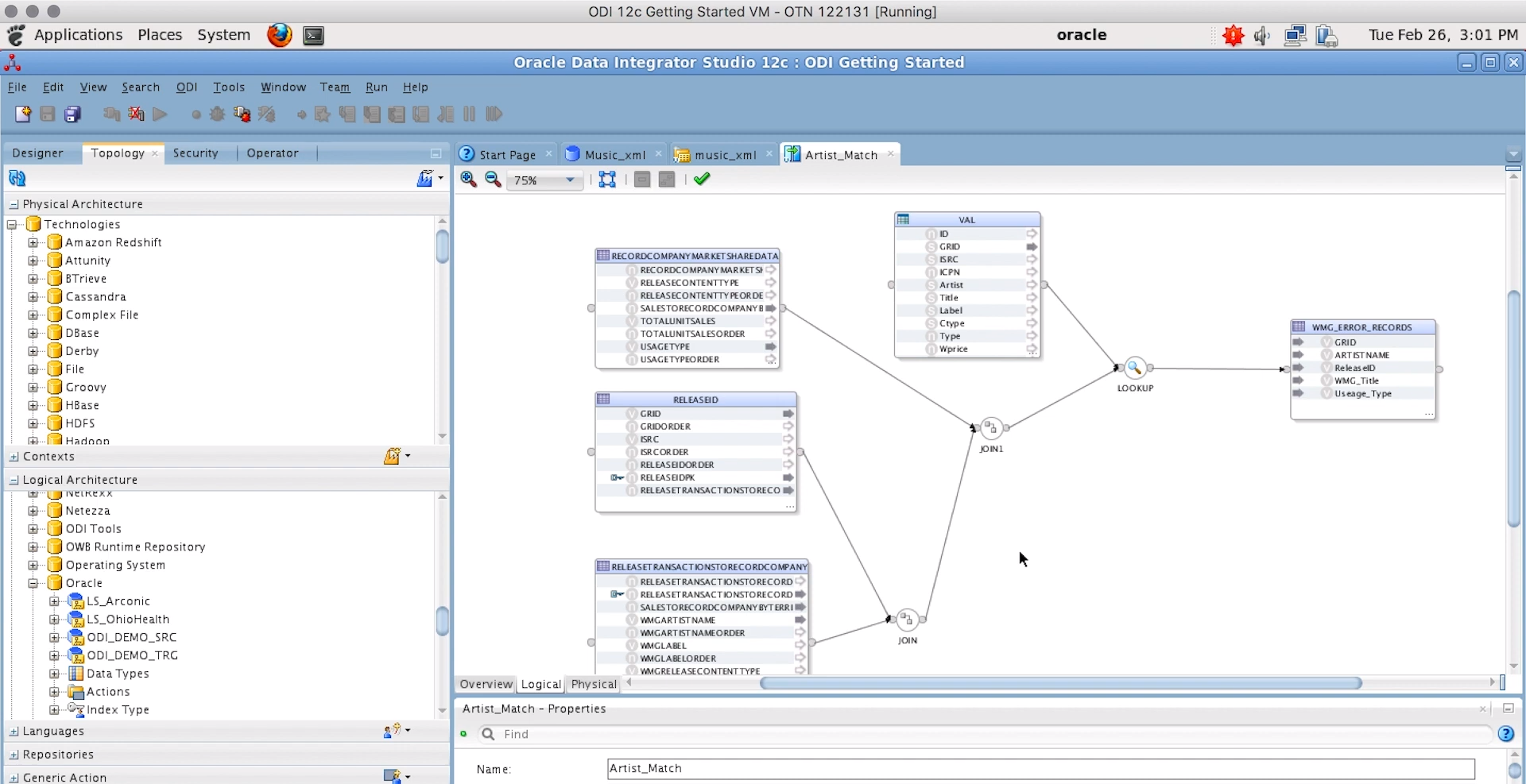
Oracle Data Integrator features:
- Based on the principle of “declarative design,” which allows you to separate the description of the data conversion scheme into business rules and technological implementation.
- The ODI architecture includes a mechanism for extending the product’s capabilities by connecting new knowledge modules. Knowledge modules are “plug-ins” that implement best practices for loading and processing data for a particular data source or target database.
- ODI supports the development of fairly complex loading processes using conditional transitions, loops, error handlers, parallel execution of operations followed by synchronization, etc.
- After starting (either manually or by schedule), the process may wait for some event, if necessary.
- Virtually any DBMS with a JDBC interface can act as a data source or receiver.
SAP Data Services

SAP Data Services enables you to extract meaningful data from all the information available in your organization, both structured and unstructured. This data management software provides optimal capabilities for data integration, quality assurance, data cleansing, and more. It transforms data into a reliable and high-quality resource for everyday tasks that can be used to optimize business processes and maximize efficiency.
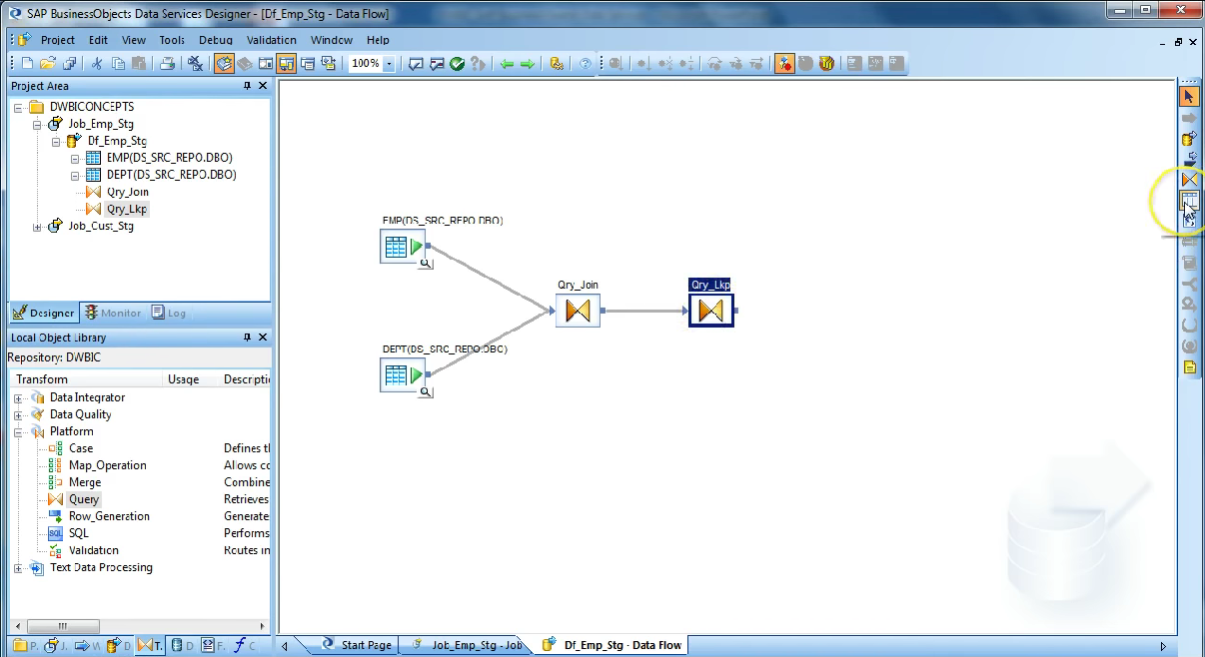
Data Services features:
- Real-time data quality tracking capabilities with consequence analysis and data provenance assessment.
- Data validation using dashboards and business process auditing.
- Workflow design with exception handling and recovery features.
- Multi-user support (logon/logoff time) and version maintenance through a central repository.
- Transformation management to define operational best practices.
- Versatile administration and reporting tools.
- Scalable scripting language with a wide range of built-in features.
- Interoperability and flexibility with web-based applications.
- Highly efficient parallel transformations and distributed computing.
- Built-in error-finding, debugging, and data browsing capabilities.
- Extensive support for data sources and targets.
Talend Open Studio

Talend Open Studio (TOS) is a powerful and versatile open-source challenger in the top cloud-based ETL tools comparison.
This modeling tool uses a top-down approach that allows business stakeholders to be involved in the design of the ETL processes and to observe the development progress. Business models focus more on the business user rather than the technical aspect and are created using a user-friendly library of shapes and relationships.
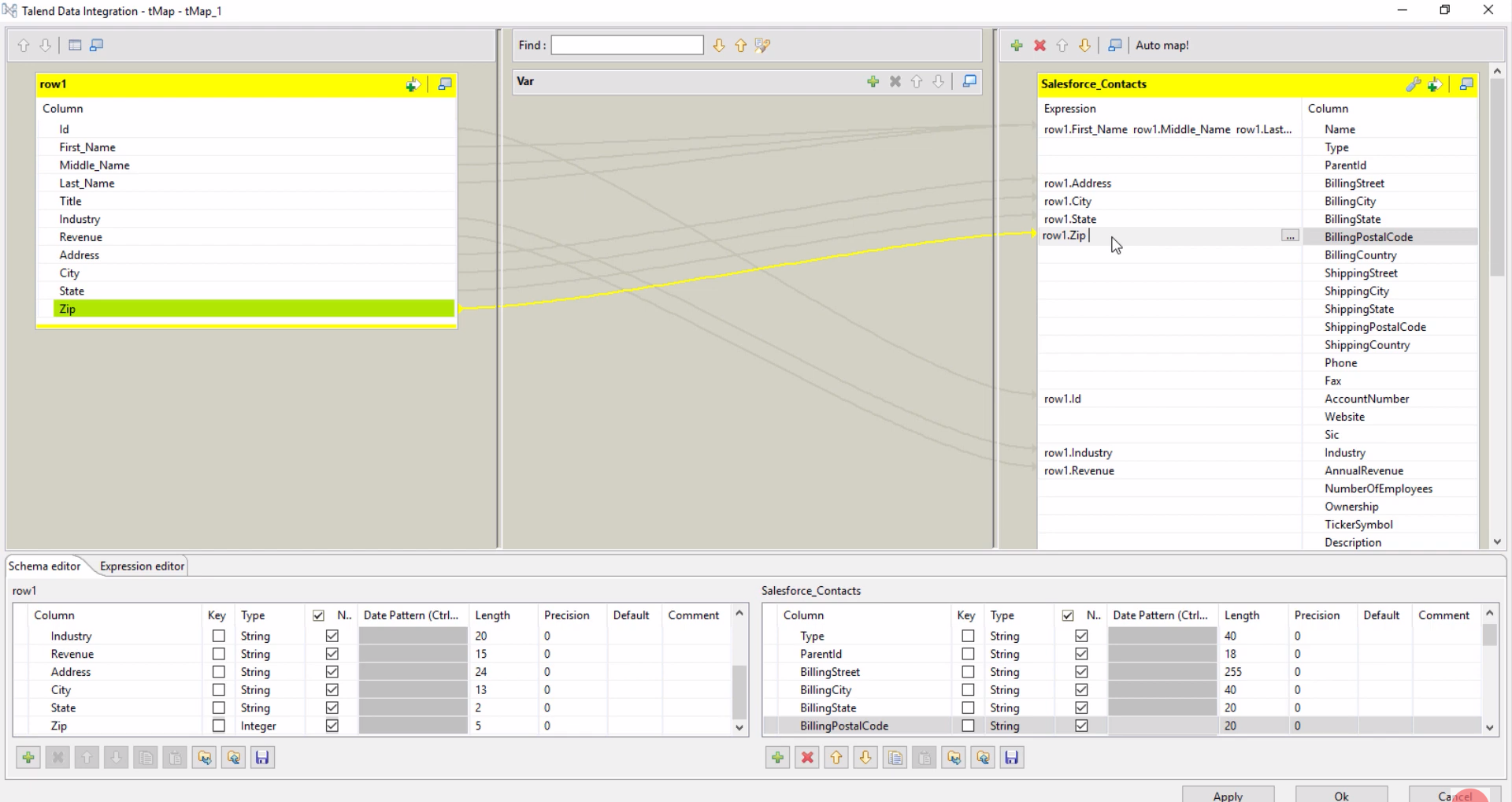
Talend Open Studio features:
- A powerful and extensible data integration solution.
- An extensible solution even with complex and customized customer requirements.
- Open-source model.
- Provides business users with the information to make timely and effective decisions.
- Business-centric process modeling involves business stakeholders and ensures proper interaction between IT and the business.
- Built-in enhancements for ETL, including line operations, slow measurement change (SCD), bulk loading support, etc.
Astera Centerprise

Astera Centerprise is an ETL cloud tools platform with many supported systems. It enables a high level of data consolidation. A number of built-in transformations enable data transfer without code by simple drag-and-drop.
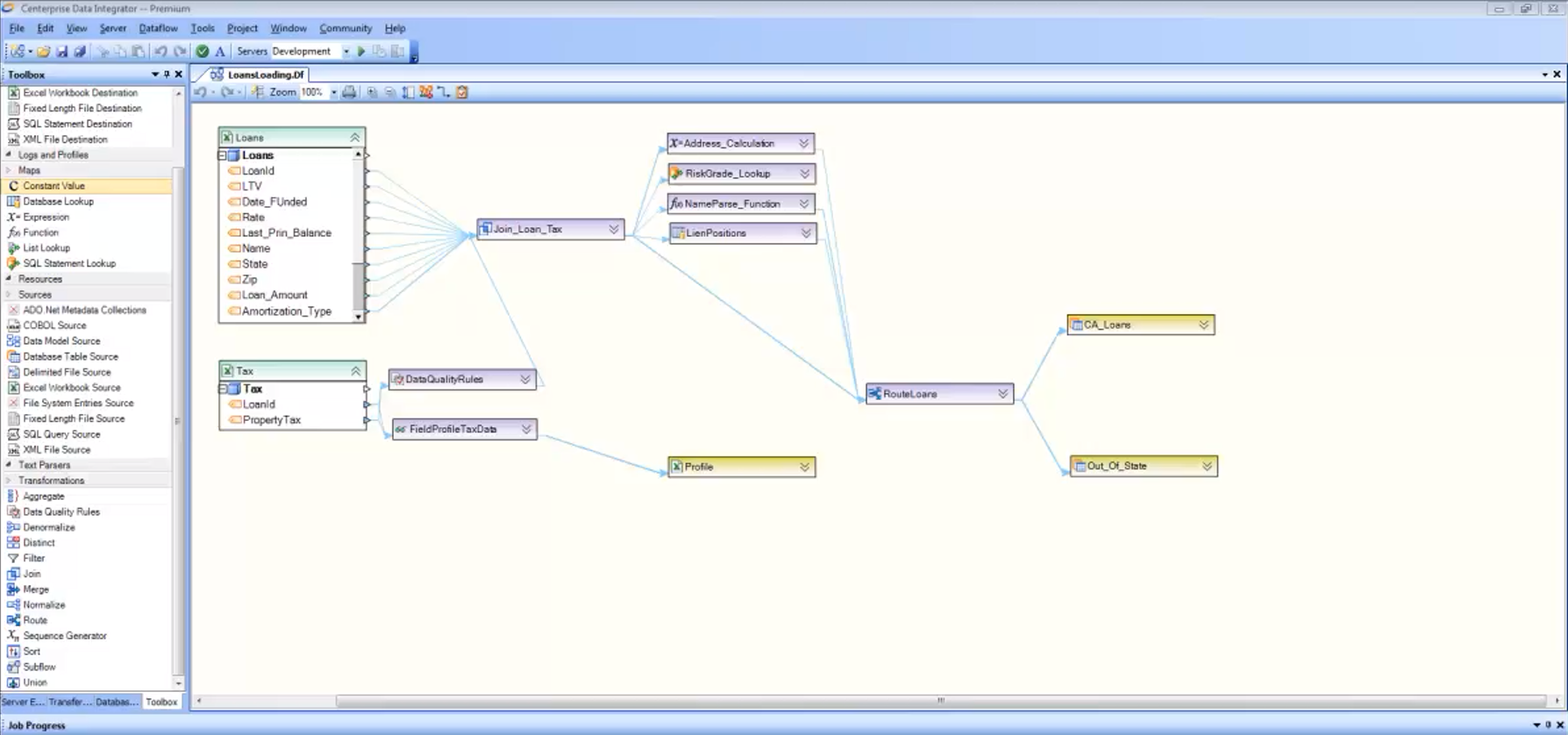
Astera Centerprise features:
- Multi-tiered architecture.
- Extensive code reuse capabilities.
- Easy debugging.
- Flexible system design.
- Data acquisition and batch processors can be integrated for faster and more efficient data migration.
- Unique network architecture template with author and user concepts (PubSub publisher and subscriber).
- Capable of working with DB2, Teradata, and Sybase, among others.
- Data integration with Salesforce via Salesforce workflow.
Hevo Data

An automated ETL pipeline creation that helps you move data from databases, cloud applications, and SDKs to any repository. The software allows you to perform all data pipeline-related operations in real-time without any coding. Setting up this tool is easy; the range of integrations with data sources is wide.
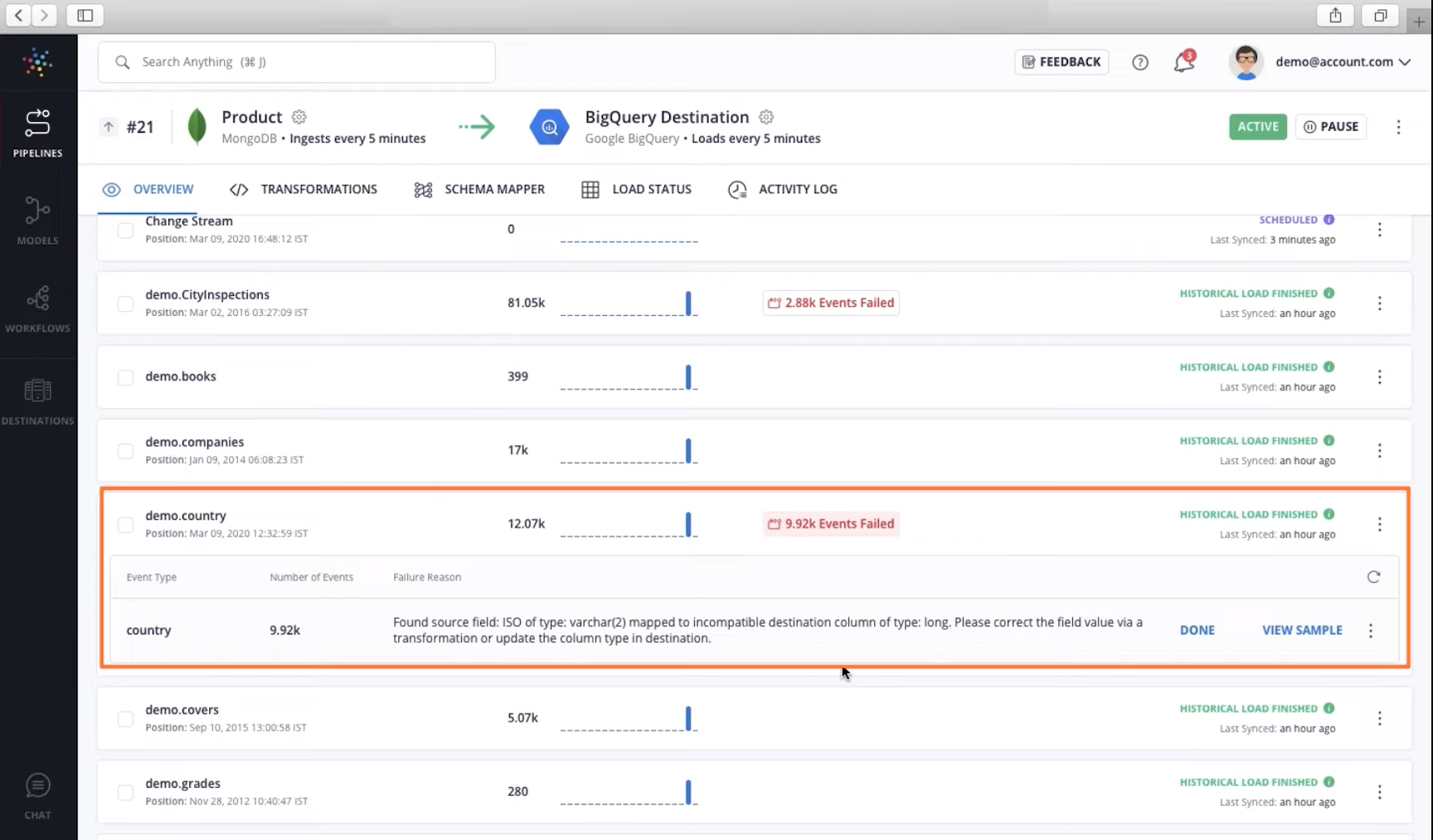
Hevo Data features:
- Easy implementation.
- Automatically detects and displays data schemes.
- Ability to duplicate the scheme in the data warehouse without manual intervention.
- The tool is based on a real-time streaming architecture.
- Cleansing, transforming, and enriching data both before and after it is moved into the repository.
- Enterprise-grade security and compliance with GDPR, SOC II, and HIPAA.
- Convenient alerting and monitoring settings.
Improvado

Improvado is another robust ETL tool. It can connect to over 100 data sources that you can connect and manage through a single platform in the cloud or on location.
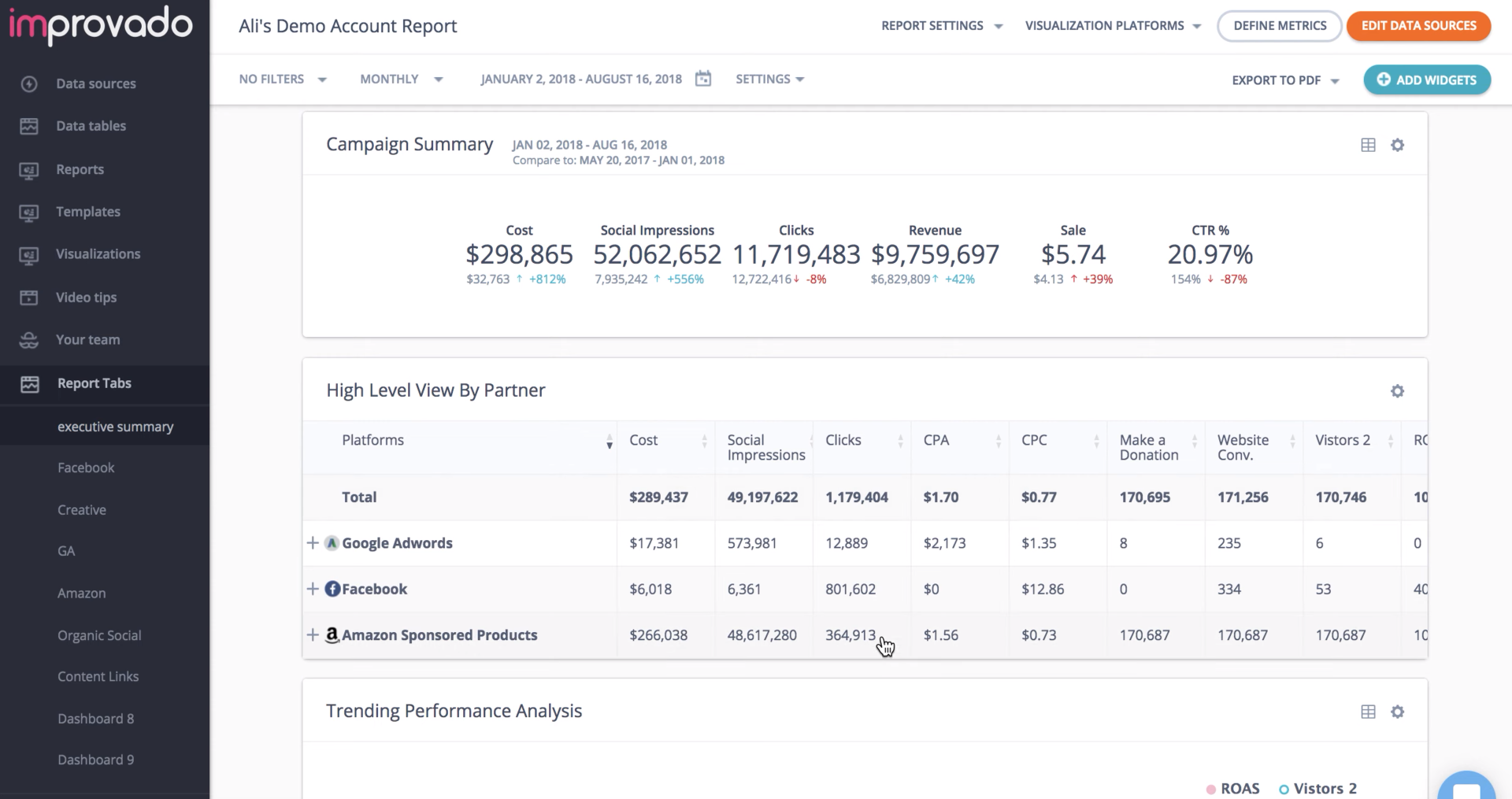
Improvado features
- REST API for extracting data from various sources, cleaning it up, and organizing it.
- Transform data by merging tables and changing data structures.
- Processed data can be uploaded to an internal database or an external repository (e.g., Google BigQuery or PostgreSQL).
- 180 available integrations with other tools for Big Data (such as Google Analytics or Salesforce).
- There is no way to test before buying to see if it is suitable for the business due to the lack of a trial period.
- The tool does not collect data on user behavior.
Skyvia

Skyvia is a feature-rich web-based cloud data integration and backup service. It provides top cloud ETL tools for integrating cloud CRM with other sources. In addition, this software gives you the ability to control business data in its entirety and with a minimum amount of time. The data can be viewed and managed using SQL.
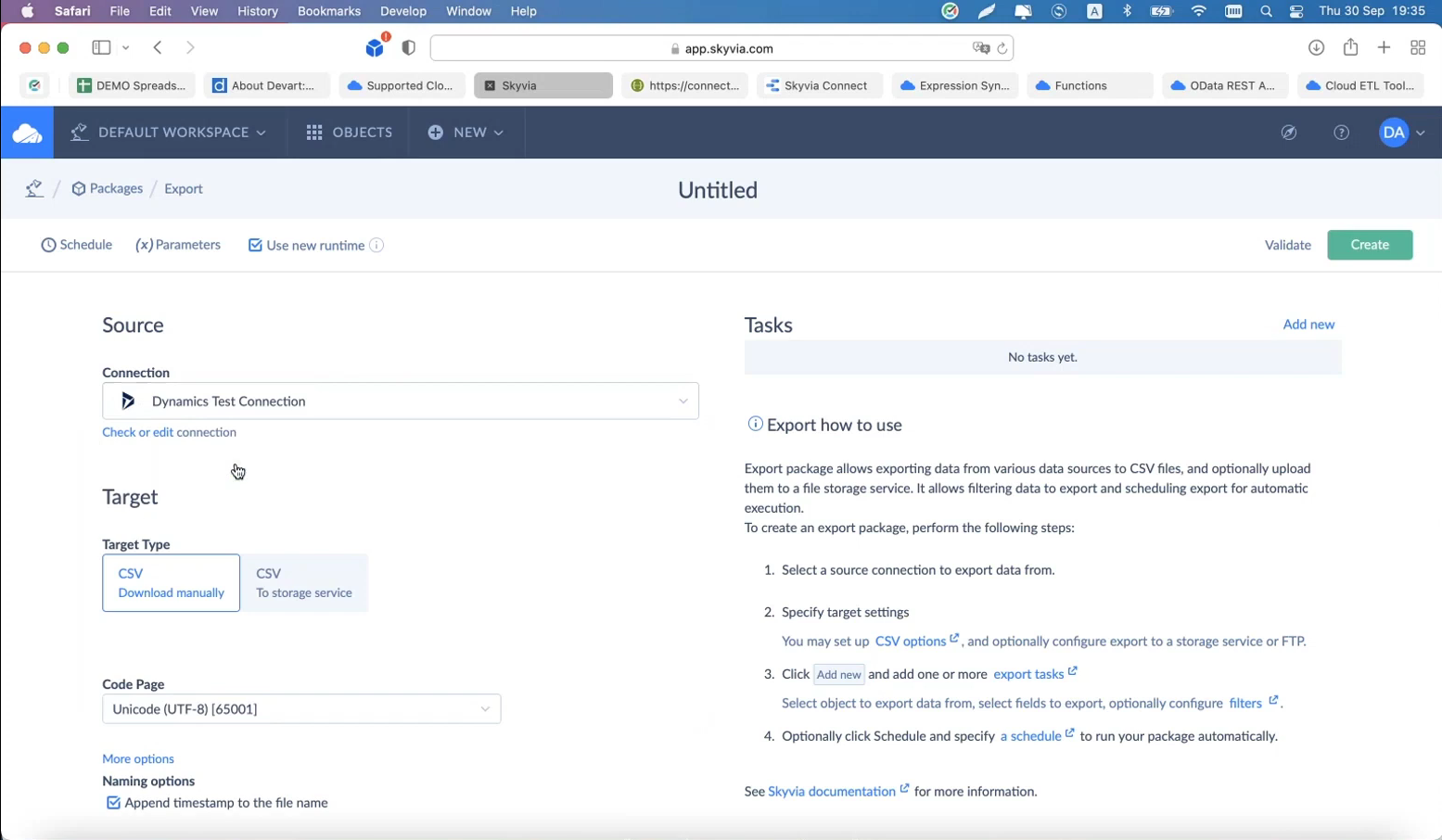
Skyvia features:
- Solves a variety of data processing tasks.
- Synchronization using predefined templates.
- Automatic backups.
- Preview of export with filtered data.
- Direct data loading between databases.
- Data transfer between cloud CRMs.
- Flexible scheduling settings to automate tasks.
- Different point in time backup comparison.
- SQL editor.
- Query builder for query development.
- Data presentation in a table or chart.
- Data recovery.
- Synchronization of databases and cloud services in both directions.
- Data import and export.
Cloud ETL Tools Comparison Table
Each of these tools has its own characteristics, advantages, and disadvantages. For a clearer picture, while selecting a cloud ETL tool, we have compiled the data in the cloud ETL tool comparison table below.
| Name | Sources/ Targets |
Operators | Alerting | Data Pipelines | Custome Code |
Cloud Service |
Ui | Delievery Cost |
| Visual Flow | Mean | Mean | Yes | Yes | Yes | Later | Web | Mean |
| Informatica PowerCenter | Many | Many | Yes | Yes | Yes | Yes | Web / desktop | Open-source license |
| Oracle Data Integrator | Many | Many | Yes | Yes | No | Yes | Web / desktop | Licensed |
| SAP Data Services | Many | Many | Yes | Yes | No | Yes | Web / desktop | Licensed |
| Talend Open Studio | Few | Few | Yes | Yes | Yes | No | Web / desktop | Open-source license |
| Astera Centerprise | Many | Few | Yes | No | No | Yes | Web | Licensed |
| Hevo Data | Few | Few | Yes | Yes | No | Yes | Web | Licensed |
| Improvado | Few | Few | No | No | No | Yes | Web | Licensed |
| Skyvia | Few | Few | Yes | Yes | No | Yes | Web | Licensed |
How Can We Help?
In this article, we share our expertise regarding current ETL solutions. The final choice is up to you, but we strongly recommend paying attention to Visual Flow while choosing the best cloud ETL tools. It’s one of the best ETL tools on the cloud for transferring data and preparing it for analysis. It allows your business to have relevant software infrastructure and outperform your competitors.
Its graphical capabilities, convenience, and rapid scalability set it apart from other tools. It combines the best features of Kubernetes, Spark, and Argo Workflows.
Furthermore, Visual Flow creators have many years of expertise behind them from their parent company IBA Group, which gives them an in-depth understanding of various industries and experience with corporate technologies and data sources. IBA Group has partnered with the creators of many of the applications listed in this article. This approach makes it possible to integrate best practices into our ETL services.
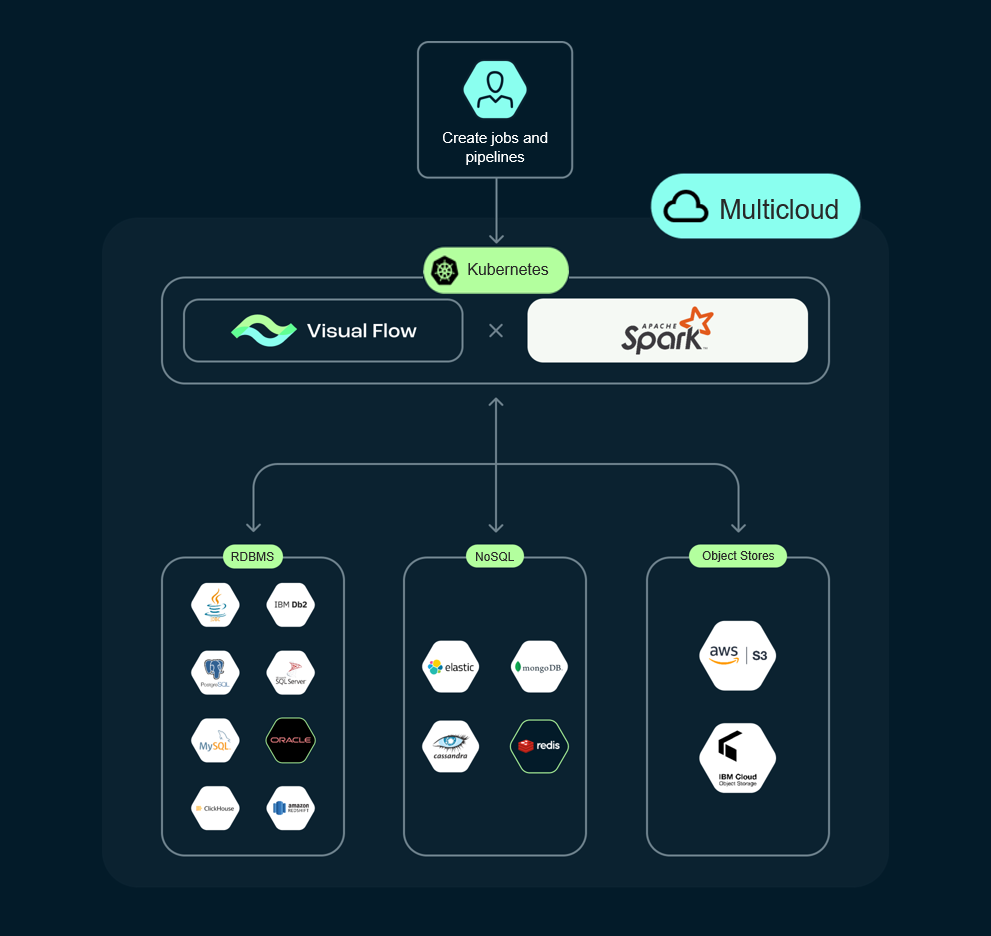
Just click the button below, and our experts will contact you and give you detailed advice on implementing ETL tools. We will perform an in-depth analysis of your business and provide a solution in the configuration that fits you best.
Conclusion
For today’s corporations, easy and fast access to data is a vital necessity. This situation has led to an increased demand for data transformation in self-service systems. ETL tools play a key role in this entire process — they provide analysts and scientists access to data from multiple application systems. This makes a huge difference and allows companies to gain new insights into the information they have.
Choosing an ETL tool is an important and responsible step. We recommend that you try Visual Flow as soon as possible and see for yourself why this solution is totally worth it. Visual Flow is a reliable and convenient ETL tool that will take the preparation and transport of data for further analysis to a whole new level.
FAQ
There are many top cloud-based ETL tools on the market. You may want to compare cloud-based ETL tools. But if you need a convenient off-the-shelf solution, we can recommend Visual Flow. It allows you to work with multiple sources and doesn’t require any code writing skills due to its convenient graphical interface.
ETL (extract, transform, load) is a vital aspect of business intelligence (BI). With ETL, data from different sources can be grouped in one place so that analytics programs can act on and implement critical business insights. Bringing this technology to the cloud has only made their use more convenient.
The main links in the ETL process are data extraction, data transformation and processing, and data loading. To implement these functions, each ETL tool usually extends some functions such as workflow, scheduling engine, rule engine, scripting support, statistical information, etc.
Contact us
